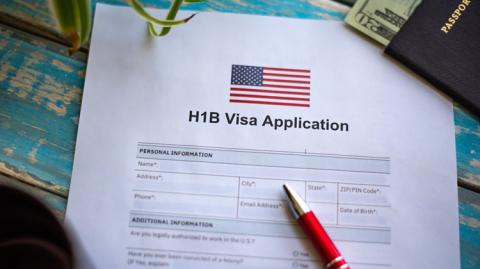Sponsored content: created in partnership with Shorelight.
For international students in the US, it can be difficult to understand the complexities of the visa system after they graduate. To ensure that students follow the correct processes, Shorelight – a US-based international student marketplace – offers support and guidance from enrolment to long after graduation
Brittany Chill is assistant director of career services at Shorelight. Her department works with students in three key areas: understanding visas, securing internships and placements, and preparing them for the US job market.
“There are typically three visas that can be used by students,” Chill explains. “F-1 – self-funded; J-1 – sponsored; and M-1 – short-term study. F-1 is the most typical for any international student who is coming to do a degree programme,” Chill says. She explains that on this visa, students can undertake internships and employment while studying, as well as work in full-time employment for 12 months after graduation. “That’s where optional practical training (OPT) comes into play,” Chill says. “If they’re studying anything STEM, they can get up to an additional 24 months.”
The chance to work for up to three years helps graduates gain experience and plan their careers. “One to three years is a good amount of time to get some necessary experience before taking your degree and skills back to your home country,” Chill says. “For those who aspire to remain in the US, it’s a good amount of time for H-1B petitions to be able to be sent in.”
Necessary for anyone planning to work beyond the F-1 and OPT window, the H-1B visa is a short-term, employer-submitted sponsorship that gives people the right to work in the US for up to six years. These visas are granted on a lottery system each April, with about 80,000 petitions accepted each year out of hundreds of thousands of applications.
Chill explains that currently, 70 percent of H-1B visas are obtained by professional or graduate-level students. Tech, healthcare and engineering are the most in-demand fields and will be prioritised. “So it’s not as easy to get an H-1B visa,” Chill says. “Fortunately, they can be applied for every single year.” An exception to the lottery system is non-profit or education employers, Chill adds.
For an employer to file a petition to keep a student, the student must have first successfully made themselves a desirable hire who will fit with the company’s work culture. Shorelight offers assistance in this area. “Work culture acculturation is a major piece of our support services,” Chill says, explaining that students need more than just technical skills to compete in the job market. “Most employers are looking for people who know how to navigate interpersonal relationships because this is what ends up driving everything – teamwork, leadership, critical thinking and the ability to adapt and be flexible on the spot.”
Students who can speak confidently with an employer, usually at an on-campus careers fair, are most likely to pass the first hurdle in gaining employment, Chill says. Students who need to gain additional skills and want an internship experience can be matched by Shorelight with short-term internship projects at one of the 12,000 global employers in its network through the Career Premium programme. More information can be found here.
For general preparation, Shorelight begins student support at orientation and offers additional guidance around the typical hiring cycle in the US. “At the university level, employers tend to do university recruiting in the fall, typically September and October, and then in the spring,” Chill says.
By working with Shorelight’s experts, students are able to enter the workplace with the skills they need to succeed in the US and beyond.
Find out more about Shorelight.

Comments